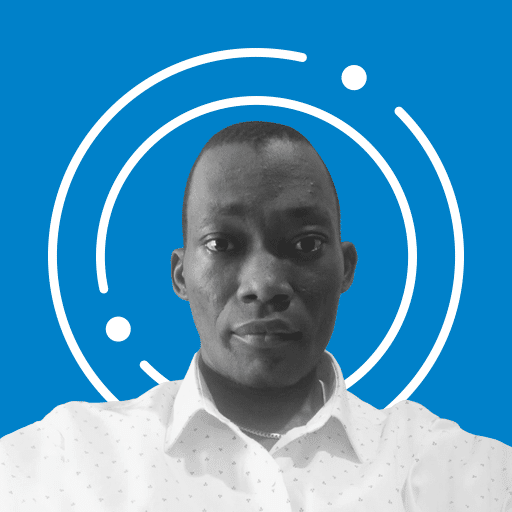Polkadot Leads Blockchain Into The Era Of Decentralized Finance (DeFi)

By connecting parallel blockchains, Polkadot has provided a hot topic of discussion for the evolving world of blockchain technology. The platform’s primary goal is to enhance security, scalability and open ways for innovative solutions. Just like Ethereum, Polkadot provides a platform for startups to create decentralized applications (Dapps). Only this time, Polkadot allows projects across parallel blockchain to interact and transact with enhanced interoperability.
The year 2020 saw the blockchain and cryptocurrency industry negotiate a new turn as the concept of decentralized finance (DeFi) achieved a reasonable level of prominence. This was enhanced by the possibility of parallel blockchains becoming able to interact and exchange value effectively. This is an area that has eluded the blockchain industry until recent times.
A Hub For DeFi Infrastructure
Polkadot’s initiative of permitting independent blockchains to become more versatile, running on the Substrate framework has become a very vital tool for the cryptocurrency ecosystem. This has greatly encouraged the creation of solutions that are bridging the gap, even with the mainstream. Perhaps, the goal of blockchain adoption may have just negotiated a new dimension. This is evident in the fact that everyday users are now finding easier ways of extracting value from the cryptocurrency ecosystem.
Take for instance the MANTRA DAO, a DeFi infrastructure that runs on the Polkadot ecosystem. This enables crypto users to extract locked value from their assets, using models that are similar to what is obtainable in the mainstream. Lending, Borrowing, Staking among others are some of the products that are enabled on the MANTRA DAO.
The role of Polkadot in this case is similar to what Ethereum has done to the world of decentralized applications (Dapps). The difference in this case is that unlike Ethereum, which made it easy for developers to create decentralized applications, Polkadot goes a step further to permit interchain interactions within its ecosystem. This is one of the key aspects of this innovation that has tickled the fancy of the tech world as a whole.
Mending Fences With The Mainstream
Blockchain’s relationship with the wider world of technology has been the main setback when it comes to adoption and implementation. The fact that over the years, it is either you’re in or out, that is why the majority across the mainstream have been unable to find a meeting point with the world of decentralized technology. Apart from that, the complexity involved in building blockchain products also played a role in keeping away even tech-minded participants themselves. This particular aspect was addressed to a large extent by the innovation that was introduced by the Ethereum blockchain as mentioned above which lowered the entry barrier by providing the tools for building Dapps.
Riding on the concept of lowering barriers, even Polkadot has also taken it a step further. Another existing DeFi infrastructure on the platform, RioDeFi has not only explored the suite of tools provided by Polkadot. RioDeFi provides the opportunity for a sub-generation Dapps creation still within the Polkadot ecosystem. This infrastructure enables the bridging of different worlds of technological models in terms of value transfer, as already mentioned above. This is a concept that is attracting a lot of interest, and encouraging exploration of decentralized technology, especially from quarters that haven’t shown significant interests in the past.
The Rise To Prominence
Although Polkadot became more popular in 2020, the project has been in existence for about 4 years. Understandably, nothing significant was heard about it, not until the launch of its Mainnet in the middle of 2020. Then like wildfire, everything seemed to blow up. The key players in the project’s network are the parachains, which include projects like MANTRA DAO and RioDeFi that have been mentioned already. The goal of the team behind the Polkadot project is to have up to 100 parachains in its ecosystem that are fully interoperable.
Already, apart from the two that have been mentioned already, a number of others are also running on the platform. For example, Acala, which is a DeFi hub, defined as an “all-in-one DeFi service center”. Acala was launched in Singapore on August 07, 2020. Acala’s first product is the Acala Dollar (aUSD) which is based on Substrate. There is also Polkastarter, a decentralized exchange that allows users to launch interoperable token pools with cross-chain swaps among a few others.
So far, the few implementations that we have seen may be responsible for the level of adoption that Polkadot has experienced, which is by all standards impressive. As at November 2020, barely six months into launching its Mainnet as mentioned above, Polkadot’s native cryptocurrency (DOT), with a daily volume of over $500 Million and a market capitalization of more than $4 Billion has risen to the top eight cryptocurrencies at the time of writing. Perhaps, we may see more rise in prominence when more products launch on the platform. Ethereum leaves us with a real time example of how the Dapps ecosystem grows with adoption.
The structure of Polkadot begins with the Genesis Relay Chain. Every other infrastructure on the protocol must be validated by the validators of the Relay Chain, thus ensuring interoperability. The Substrate framework affords the platform an almost endless capacity to accommodate parachains of varying complexity working in the same ecosystem. Such complexity that sees the ability for these parachains to interact, not limited to within the Polkadot ecosystem alone. Already in existence is the Moonbeam, a smart contract parachain on Polkadot that is compatible with Ethereum. Moonbeam enables developers to deploy solidity smart contracts in the Polkadot environment.
There is no doubt that this is still early days for the blockchain industry and decentralized technology. The developments that we are experiencing, especially with innovations like Polkadot are bound to stretch our minds and expect that the evolution of blockchain and emerging technology still has a whole lot to offer. Just like Ethereum introduced the industry into the era of decentralized applications, perhaps the new season of decentralized finance is being heralded by the Polkadot project.














